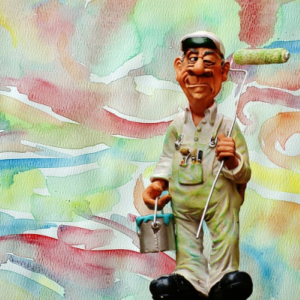Failure of House Paints from Moisture - Part 4: Repainting

We have reached part 4 of our 4-part series on failure of house paints from moisture. We are now ready to repaint after correcting the water problem.
Spot Painting
If the general condition of the paint does not require a complete repainting, it is best to spot paint the areas of wood laid bare by failure. First, scrape away the loose paint. Apply one coat of water-repellent preservative to the bare wood. Then use one coat of primer and a matched topcoat.
Complete Repainting
If the entire house needs to be repainted, then perform a thorough scraping of loose paint. Treat the scraped areas with a water repellent preservative. If paint failure is due to penetration of rain and dew through porous paint, apply a coat of primer over all and then a topcoat of oil or latex paint.
After correcting the moisture problem, a complete repainting may be needed. A thorough washing of the old paint will guard against intercoat peeling later because of a poor bond between the new and old topcoats. Use a solution of trisodium phosphate or any off the shelf commercial paint cleaner and warm water. Rinse well with clean water.
Research has shown that three coats, preceded by a primer, are usually required for the first painting to protect new wood. Each coat should be applied as soon as possible after the previous coat is dry and weather conditions are favorable.
Meet the Author
Dr. Todd Shupe is the President of Wood Science Consulting, LLC. He is a well-recognized expert on wood forensics, wood preservation, wood decay and degradation, and wood species identification. He has a broad background in new product development, quality management, and marketing and sales in both the public and private sectors. For more information please visit DrToddShupe.com.
We welcome your comments below.
Thank you for visiting. We trust that you have enjoyed reading our articles.
Liked this post? Read more below or search for more topics . . .

